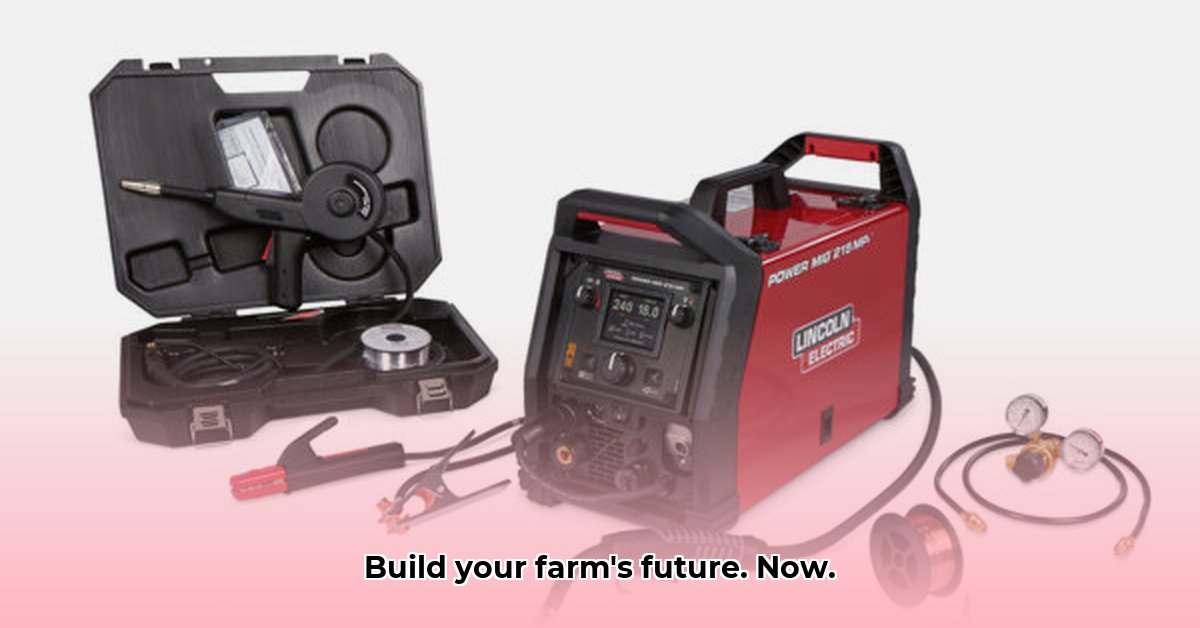
Let's face it: running a sustainable farm requires durable, reliable infrastructure. And sometimes, that infrastructure needs repair—or building from scratch. That's where a MIG welder, perhaps even one from Tractor Supply, becomes invaluable. For raised planter ideas, check out this helpful resource. This guide will show you how MIG welding can significantly benefit your farm's sustainability, saving you money and building a more resilient, eco-friendly operation.
Getting Started: Essential Tools and Safety
Before you begin, ensure you have the right equipment and prioritize safety. You'll need:
- MIG Welder: Tractor Supply offers a range of MIG welders; research to find one suitable for your budget and needs.
- Welding Helmet: A helmet with a dark shade (the darker, the better the eye protection) is crucial.
- Welding Gloves: Durable, heat-resistant gloves are essential for protecting your hands.
- Safety Glasses: Always wear safety glasses to protect your eyes from sparks.
- Wire Brush: A wire brush is needed for cleaning metal surfaces before welding.
- Sturdy Work Boots: Protect your feet from potential hazards.
Safety First: Always weld in a well-ventilated area. Never compromise on safety gear – it's your best protection against injury.
Mastering Basic MIG Welding Techniques
MIG welding uses a continuous feed of wire for smooth, consistent welds. Here's a simplified step-by-step process:
Preparation: Clean metal surfaces thoroughly with a wire brush, removing rust, paint, or debris. A clean surface ensures a strong weld.
Welder Setup: Adjust voltage and wire feed speed according to your welder's manual and the metal thickness. Incorrect settings can lead to weak welds or equipment damage.
Starting the Weld: Touch the electrode to the metal to initiate the arc. Maintain a consistent distance between the electrode and the metal as you weld.
Welding: Move the welding gun steadily and smoothly. A consistent, even motion is vital for a strong, neat weld. Practice makes perfect.
Cooling: Allow the weld to cool naturally. Avoid rapid cooling methods, as this can weaken the weld.
Sustainable Farm Projects: Putting Your Skills to Work
MIG welding offers numerous applications on a sustainable farm:
Greenhouse Repair: Repair bent or broken greenhouse frames, ensuring structural integrity and plant support.
Water Trough Construction: Build a custom water trough from sheet metal, providing a durable and sustainable water source for livestock.
Custom Tool Holders: Organize your workspace and repurpose scrap metal by creating custom tool holders.
Farm Equipment Repair: Repair damaged farm equipment, reducing replacement costs and extending the life of your tools.
Detailed Project: Repairing a Greenhouse Support Beam
Let's detail repairing a broken greenhouse support beam:
- Assess Damage: Carefully examine the break to determine the repair method needed.
- Prepare Area: Clean the broken area with a wire brush.
- Cut Replacement Patch: Cut a matching metal piece to repair the break.
- Welding: Securely weld the patch to the beam using your MIG welder.
- Inspection: Inspect the repair for imperfections and smooth any excess weld material.
Troubleshooting and Welder Maintenance
Regular maintenance extends your welder's lifespan. Clean the wire feed area and contact tip regularly. Consult your welder's manual for specific maintenance instructions. Addressing issues promptly prevents larger problems down the line.
Conclusion: Building a Sustainable Future, One Weld at a Time
Investing in a MIG welder from Tractor Supply is an investment in your farm's sustainability. By mastering basic welding techniques, you'll significantly reduce repair costs, build custom tools, and maintain resilient farm infrastructure. Start small, practice regularly, and you'll soon be building a more sustainable and efficient farm.